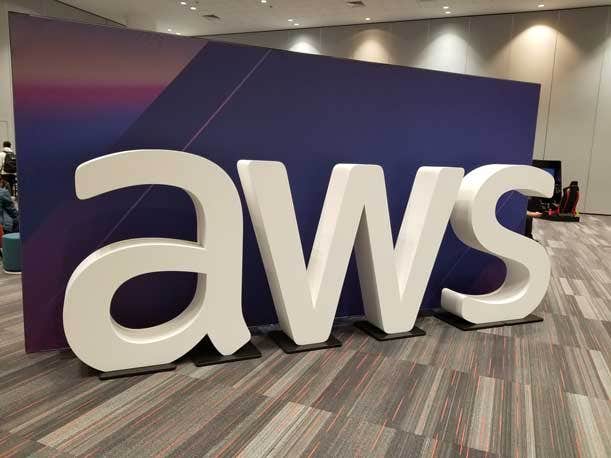Amazon CEO Andy Jassy On AWS: ‘A Lot Of Growth In Front Of Us’
‘We are not focused on trying to optimize in any one quarter or any one year. We’re trying to build a set of relationships and businesses that outlast all of us. And so if it’s good for our customers to find a way to be more cost-effective in an uncertain economy, our team’s going to spend a lot of cycles doing that,’ says Amazon CEO Andy Jassy about AWS.

Amazon Web Services, the smallest of the three business segments of Amazon, continues to be the primary growth driver for Amazon as a whole, although there are macroeconomic headwinds that could slow AWS growth going forward.
Amazon saw AWS revenue for its fourth fiscal quarter 2022 grow 20 percent compared with the fourth fiscal quarter of 2021, but that growth rate will slow, said Amazon Senior Vice President and CFO Brian Olsavsky.
Olsavsky Thursday told analysts during Amazon’s fiscal year 2022 quarterly financial analyst conference call that customers are looking for ways to save money, and Amazon spends a lot of time trying to help them do so.
[Related: AWS Could Hit $100 Billion Revenue Milestone In 2023]
“This customer focus is in our DNA and informs how we think about our customer relationships and how we will partner with them for the long term,” Olsavsky said. “As we look ahead, we expect these optimization efforts will continue to be a headwind to AWS growth in at least the next couple of quarters. So far in the first month of the year. AWS year-over-year revenue growth is in the midteens.”
That said, AWS’ new customer pipeline remains healthy and robust, Olsavsky said.
“There are many customers continuing to put plans in place to migrate to the cloud and commit to AWS over the long term,” he said.
Amazon CEO Andy Jassy, who just finished his first full fiscal year as the company’s top executive, was asked about how he sees the AWS business changing, and he responded by saying most enterprises are acting cautiously.
“You see it with virtually every enterprise,” Jassy said. “And we‘re being very thoughtful about streamlining our costs as well. And when you are being cautious, you look for ways that you can spend less money.”
The reality is that Amazon has built its business, AWS in particular, as a way to help customers find a way to spend less money, Jassy said.
“We are not focused on trying to optimize in any one quarter or any one year,” he said. “We’re trying to build a set of relationships and businesses that outlast all of us. And so if it’s good for our customers to find a way to be more cost-effective in an uncertain economy, our team’s going to spend a lot of cycles doing that.”
That ability to help customers be more cost-effective is something Amazon has talked about since launching AWS in 2006, Jassy said.
“When it turns out you have a lot more demand than you anticipated, you can seamlessly scale up,” he said. “But if it turns out that you don’t need as much demand as you had, you can give it back to us without paying for it. And that elasticity is very unusual. It’s something you can’t do on-premises, which is one of the many reasons why the cloud and AWS are very effective for customers.”
AWS has a very robust customer pipeline, with new customers and migrations set to happen, and as many companies use times of uncertainty to look at how to reinvent their businesses and improve customer experience, that often means moving to the cloud, Jassy said.
While AWS is the only large cloud company to break out its cloud business numbers, Jassy said AWS still has significantly more absolute dollar growth than anybody else in this space.
“And I think some of that’s a function of the fact that we just have a lot more capability by a large amount, with stronger security and operational performance and a larger partner ecosystem,” he said. “So I think it’s also useful to remember that 90 [percent] to 95 percent of the global IT spend remains on-premises. And if you believe that that equation is going to shift and flip, I don’t think on-premises will ever go away. But I really do believe in the next 10 to 15 years that most of it will be in the cloud if we continue to have the best customer experience. ... It means we have a lot of growth in front of us in the AWS business.”
For its fourth fiscal quarter 2022, which ended Dec. 31, Amazon reported revenue of $149.20 billion, up 9 percent over the $137.41 billion the company reported for its fourth fiscal quarter 2021.
Amazon reports its business as three segments. The AWS segment revenue for the quarter was $21.38 billion, up 20 percent over last year. Amazon’s North American segment revenue was $93.36 billion, up 13 percent over last year, while international segment sales fell 8 percent to $34.46 billion.
GAAP net income for the fourth quarter was $278 million, or 3 cents per share, down significantly from the $14.32 billion, or $1.39 per share, the company reported last year.
For the full fiscal year 2022, Amazon reported total revenue of $513.98 billion, up 9 percent compared with $469.82 billion in fiscal year 2021.
This included AWS segment sales of $80.10 billion, up 29 percent; North American segment sales of $315.88 billion, up 13 percent, and international sales of $118.01 billion, down 8 percent.